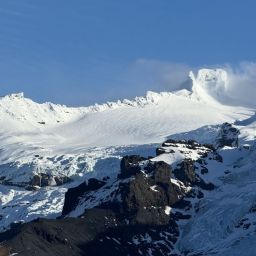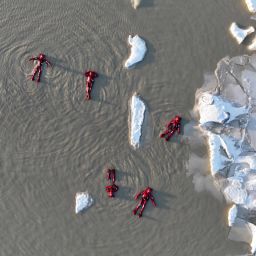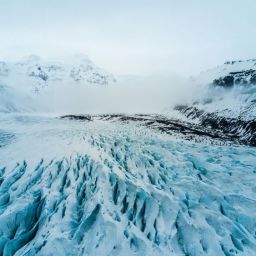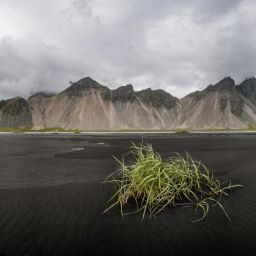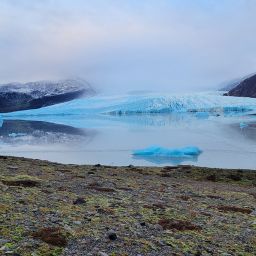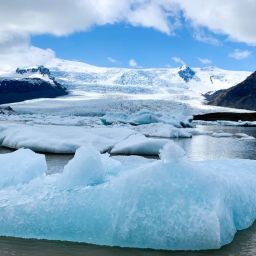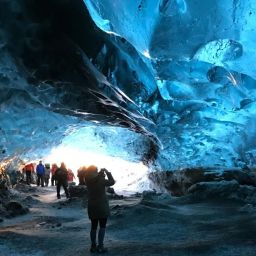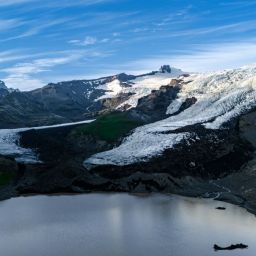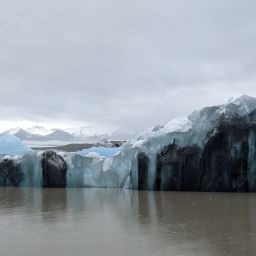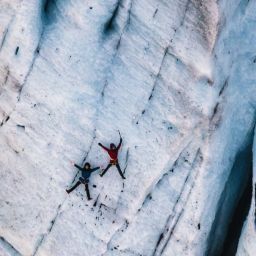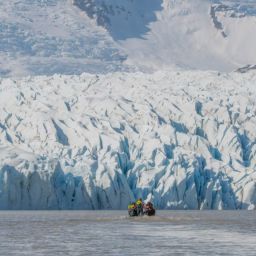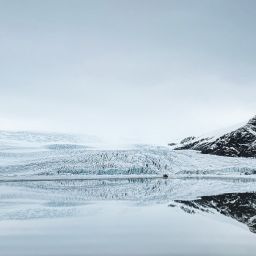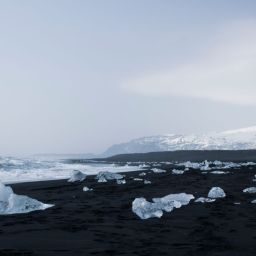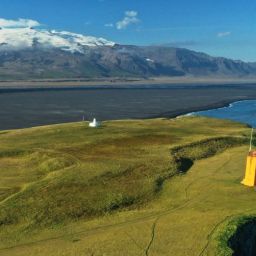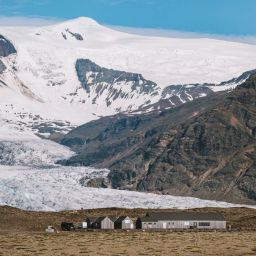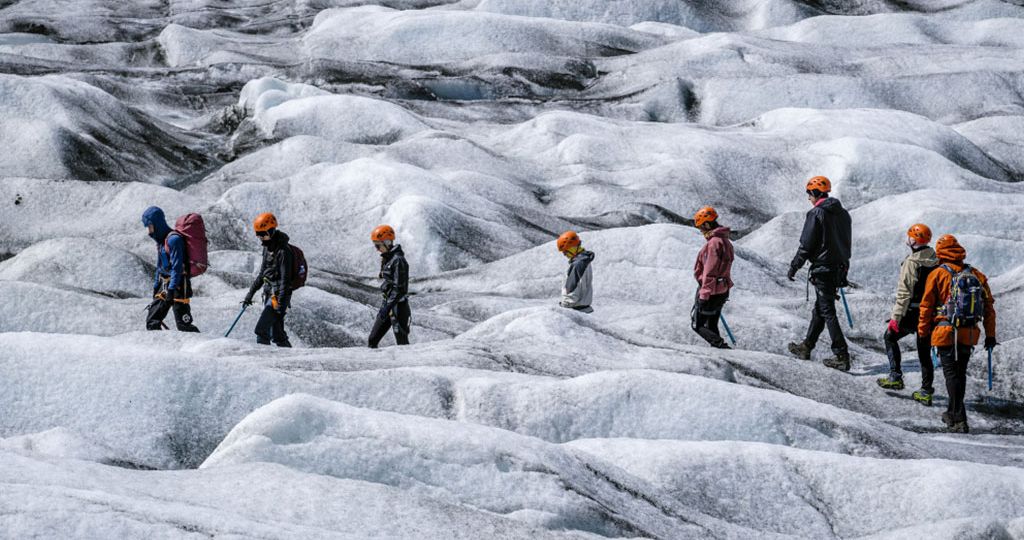
Embarking upon a glacier hike near Fjallsárlón is the ideal complement to a boat trip out on the lagoon. This chance to see the ice from a different perspective is surely one you won’t want to pass up. But if you’ve never done one before, a glacier hike can feel a little daunting. Luckily, you’ll only go up onto the glacier with an experienced guide. They’ll talk you through what to expect as well as be there to support you and give you confidence throughout the activity. Nevertheless, if you’re keen to know more before you sign up, take a look at this brief guide.
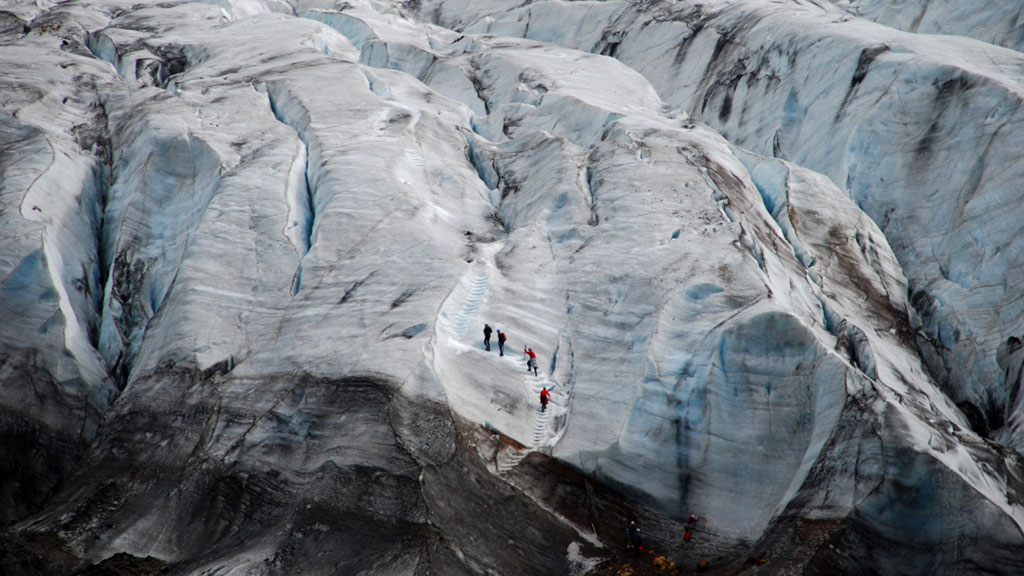
Glacier hikes can vary in difficulty from taking part on steep glaciers to flat outlet glaciers.
Hikes vary in difficulty
The slopes and surfaces of a glacier vary considerably and as a consequence, so too do the hikes themselves. If you’ve chosen a hiking tour that’s suitable for beginners, you’ll be walking over a more accessible part of the glacier where it’s relatively flat. Even so, you’ll need to be in reasonably good shape as the fitness level required will still be considerable. Depending on how active you are in your everyday life, you may choose to fit in some training before you set out for Iceland to be able to enjoy your glacier hike more.
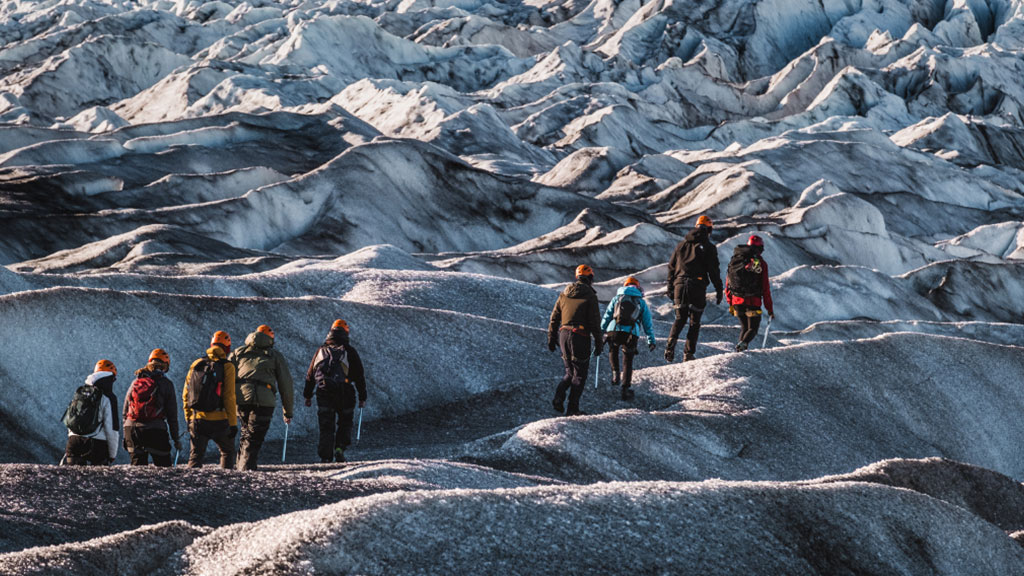
The glacier ice, like this one on Fjallsjökull, are often covered in ash and sand making the glacier ice look a bit darker and dirtier than you would expect.
The ice isn’t as white as you’d expect
From a distance, a glacier can look like one homogenous slab of white ice. It’s only when you get close up that you realise this isn’t the case. Actually, the ice varies in colour, some parts streaked with grey from the ash and other material that is carried by the glacier, and other places where it’s a vivid shade of blue. It’s such variations that make glacier hikes such a rewarding way to spend your time, and as you hike you’ll be amazed at how many different colours there are.
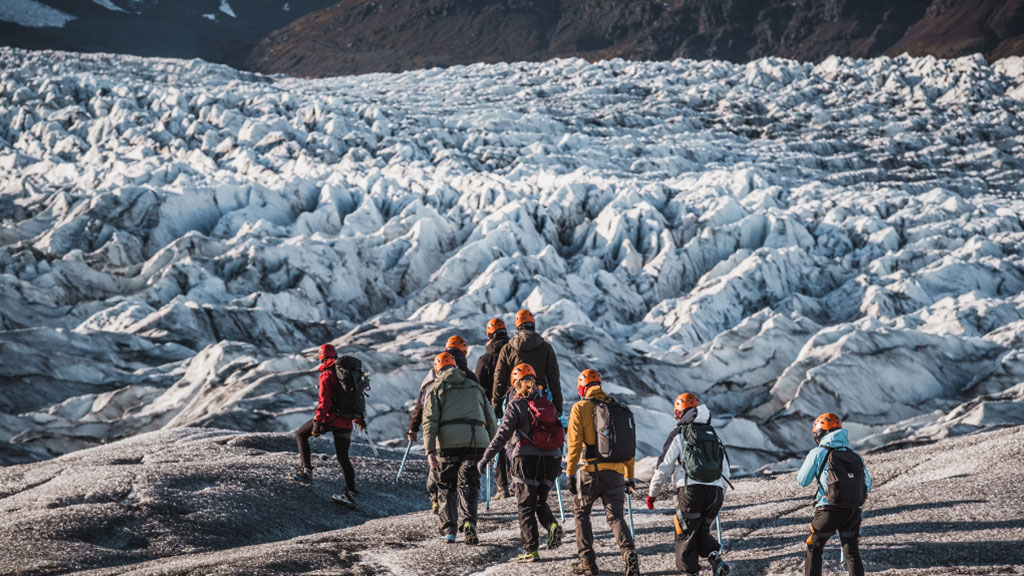
When hiking on an Icelandic glaciers you notice how uneven their surfaces are.
The glacier isn’t smooth either
Similarly, a glacier’s surface isn’t flat and smooth. This, you’ll find, is a good thing in some respects because this bumpy, uneven terrain can make it easier to get a grip and stay upright. It’s also what makes it essential to go up onto the glacier with a guide. Deep crevasses can be treacherous, particularly if snow collects around them and obscures them from view. Your guide will know where the most unstable parts of the glacier are located so that you can safely avoid them. But it’s getting to inspect the glacier up close and seeing these dimples and striations that make hiking over the ice so interesting.
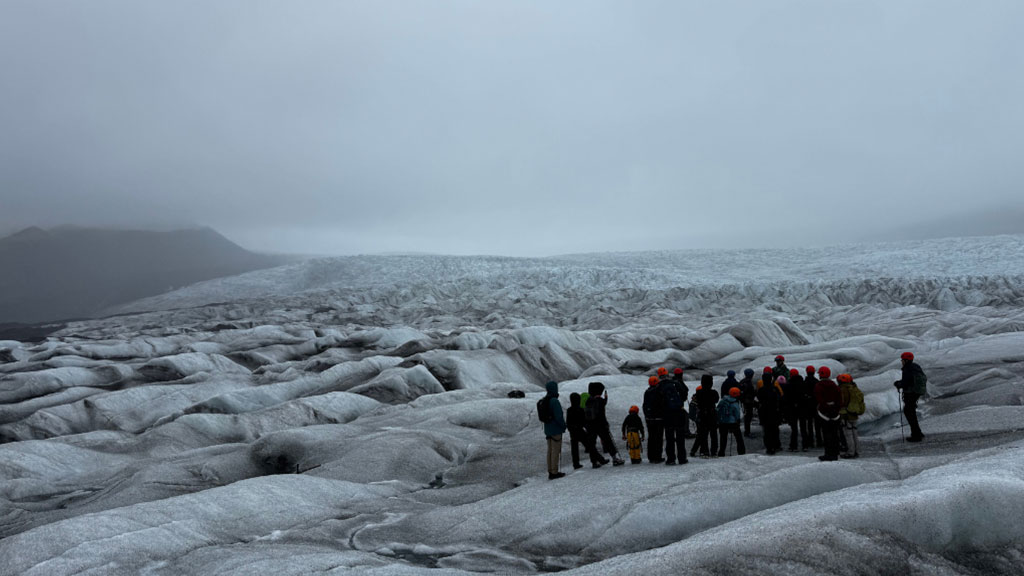
A group of people hiking on Fjallsjökull glacier in a foggy weather.
The weather can vary a lot
Conditions up on the glacier will vary a lot from what you’ve just experienced in the lowlands. The glacier’s position has an effect; for instance, its aspect will affect how much sunlight it gets, while winds can be funnelled down narrow valleys in which glaciers flow. Mountain peaks and ridges behind a glacier can influence how much precipitation it receives. What this means in practice is that if you are planning to do a glacier hike you should be prepared for variable weather conditions and dress accordingly.
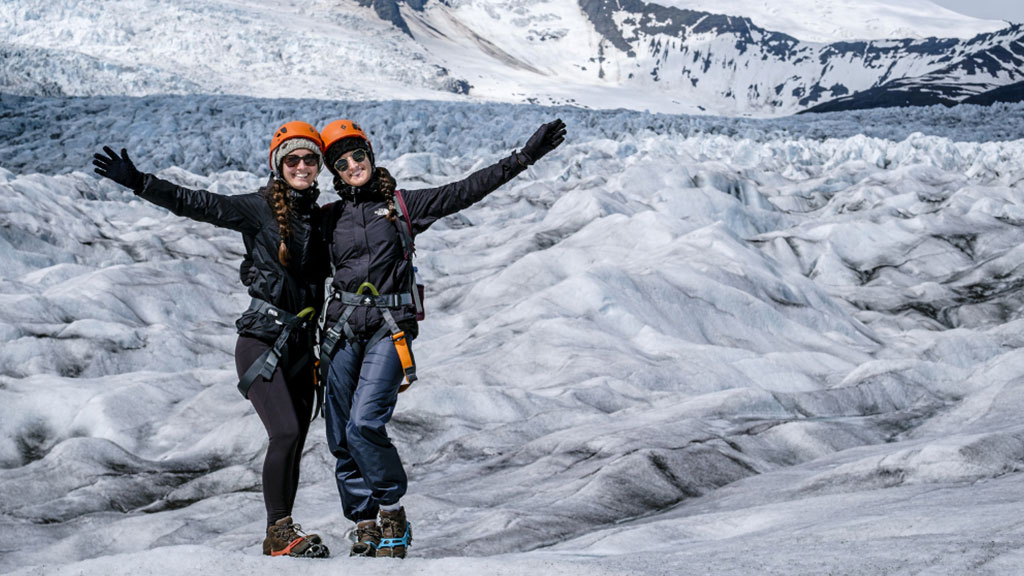
One of the things you need to take with you on a glacier hike are sunglasses as the glare from the glacier can be difficult for the eyes.
The glare from the ice can be intense
If you’re lucky enough to be up on a glacier doing your hike under blue skies, then you’ll need to be prepared. The white surface of the ice reflects a lot of sunlight – scientists term it having a high albedo – effectively turning the glacier into a giant mirror. You shouldn’t underestimate how powerful and intense the glare from the ice can be – the effect can be dazzling. For this reason, when the sun’s out you should wear high quality sunglasses with a UV resistant coating which will help protect your eyes from damage.
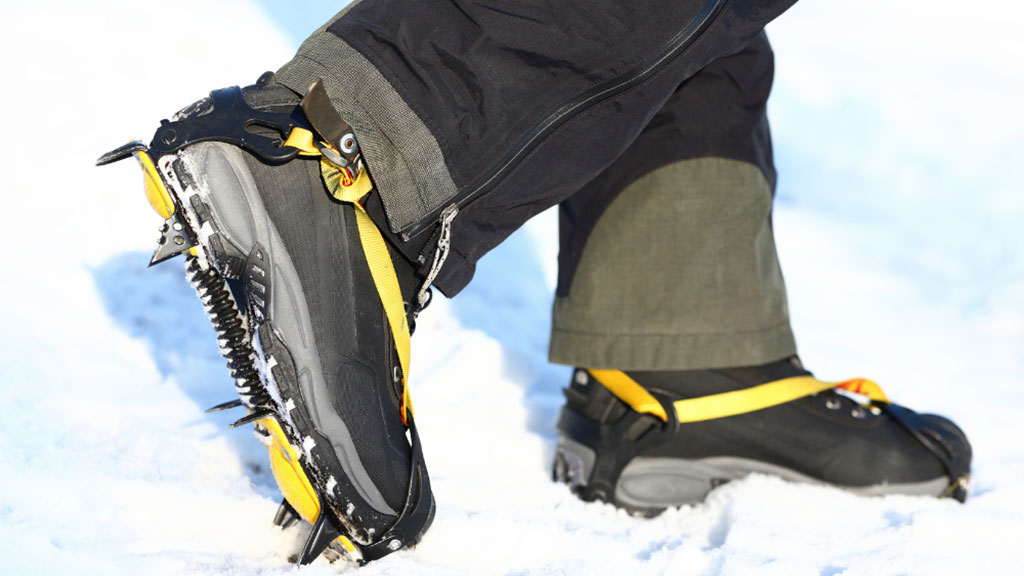
Crampons are one of the necessary items to use while on a glacier hike in Iceland.
Crampons and other equipment can feel a little strange at first
When you join a guided glacier hike, all the specialist equipment you need will be provided. Before you go anywhere near the ice, we’ll go through a safety briefing and run through the gear you’ll be using. You’ll be given a helmet to wear to protect your head and a harness in case you need to be roped. Your guide will issue you with an ice axe and of course show you how to use it where this is necessary. We’ll also supply you with a pair of crampons which you pull on over the soles of your boots. At first these can feel a bit strange, but as soon as you feel how much your grip on the ice is improved you’ll be glad you have them on.


